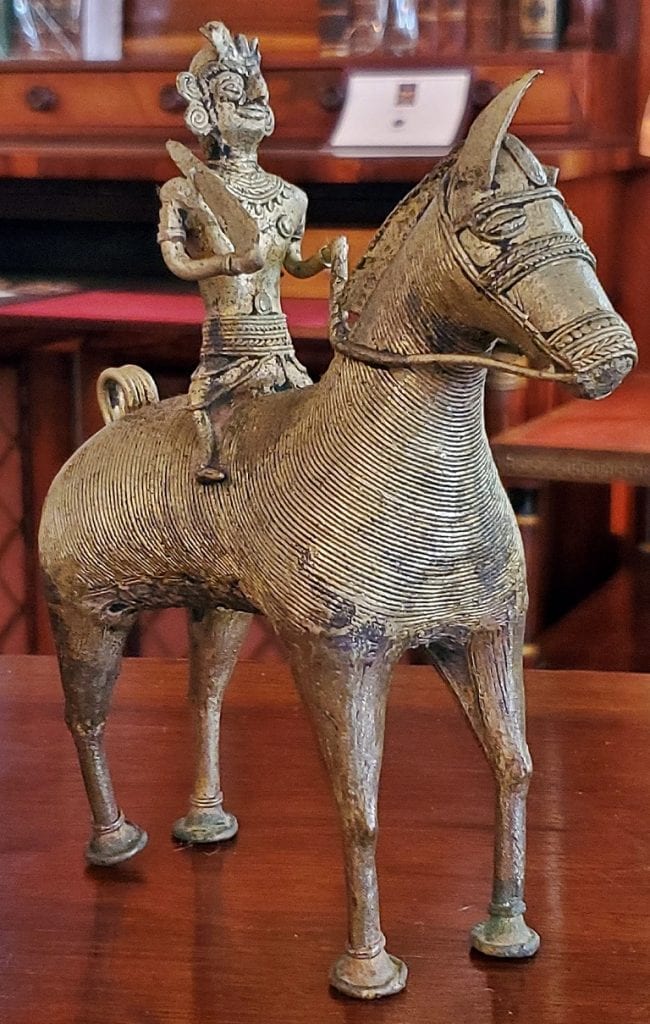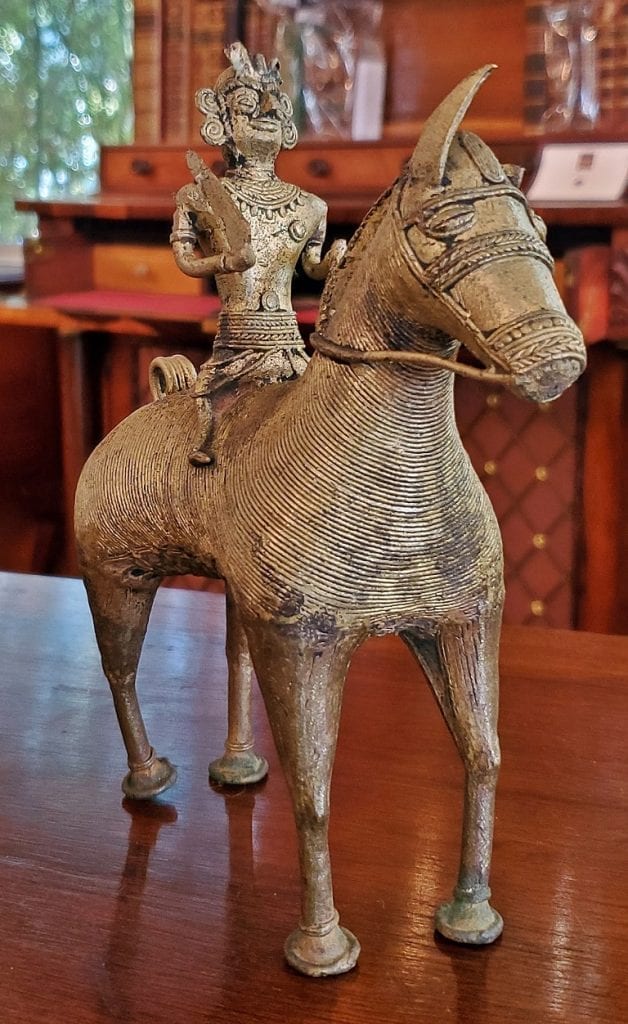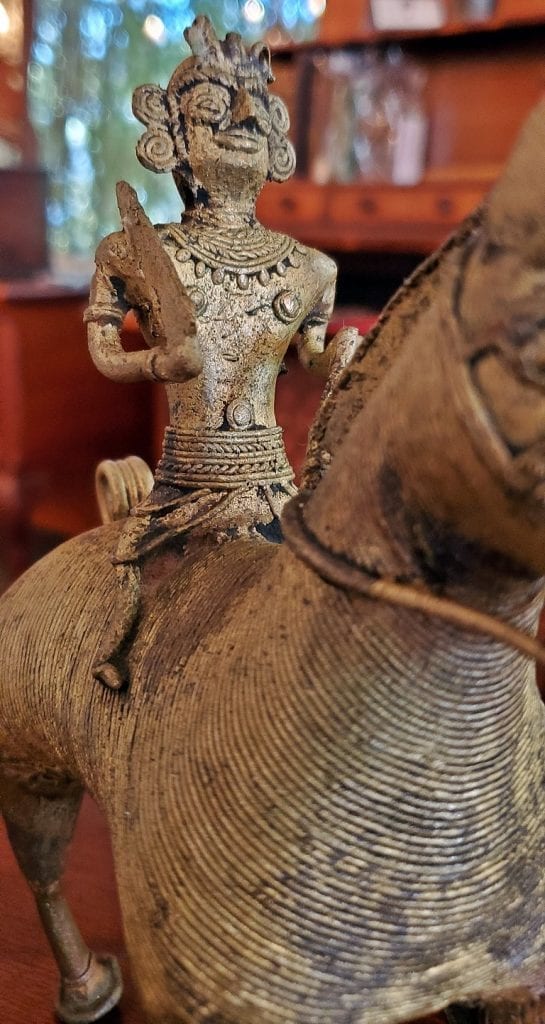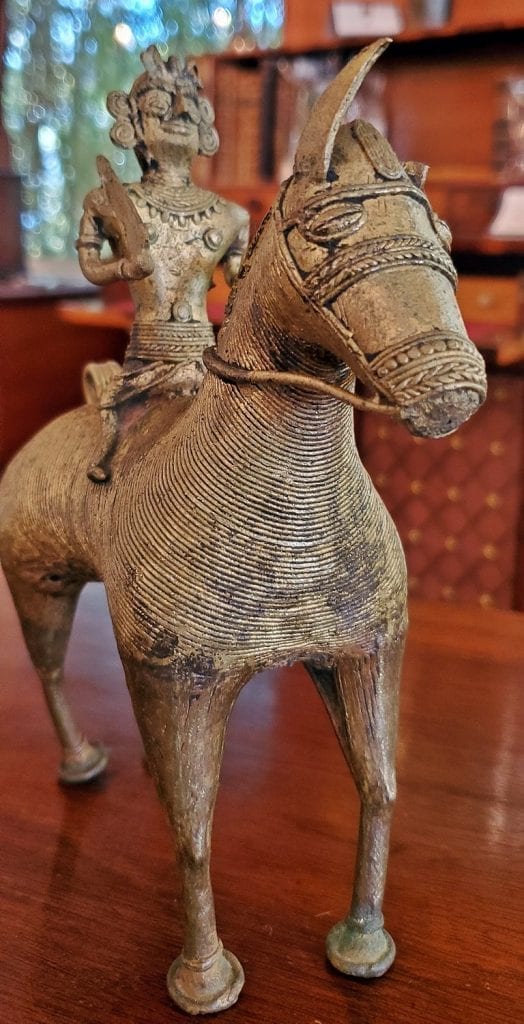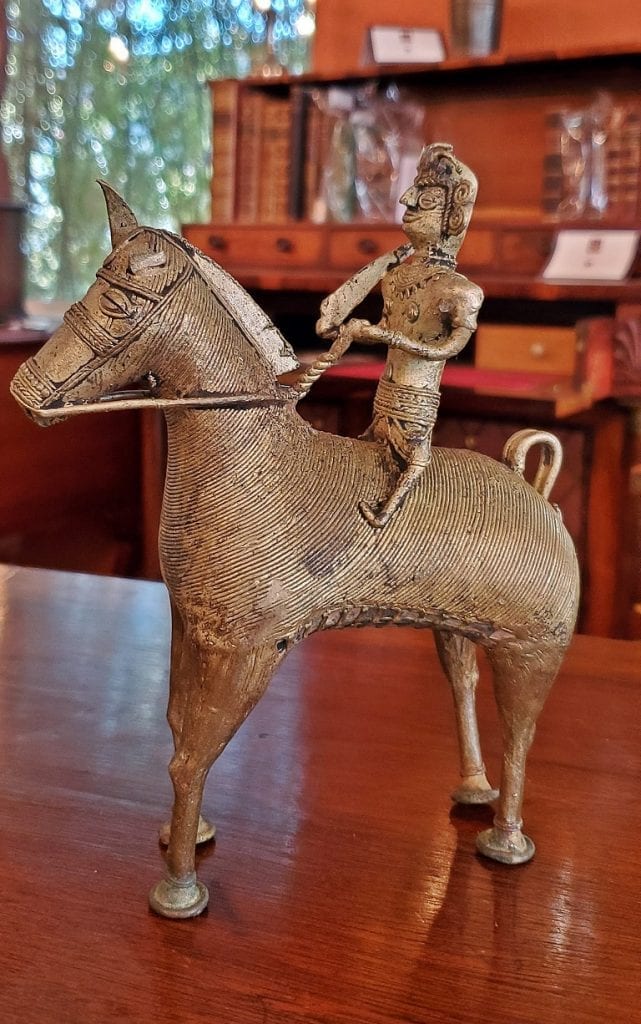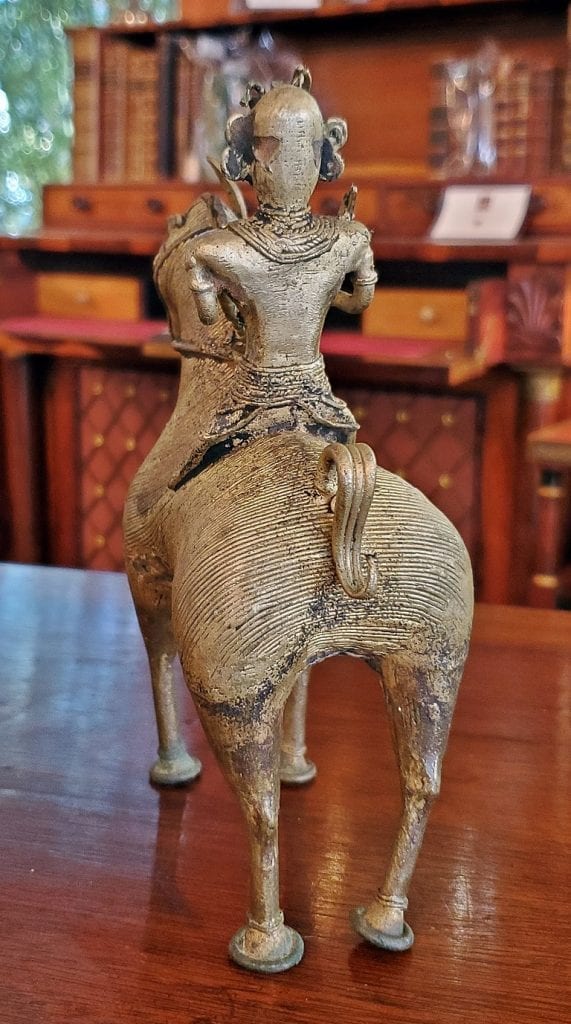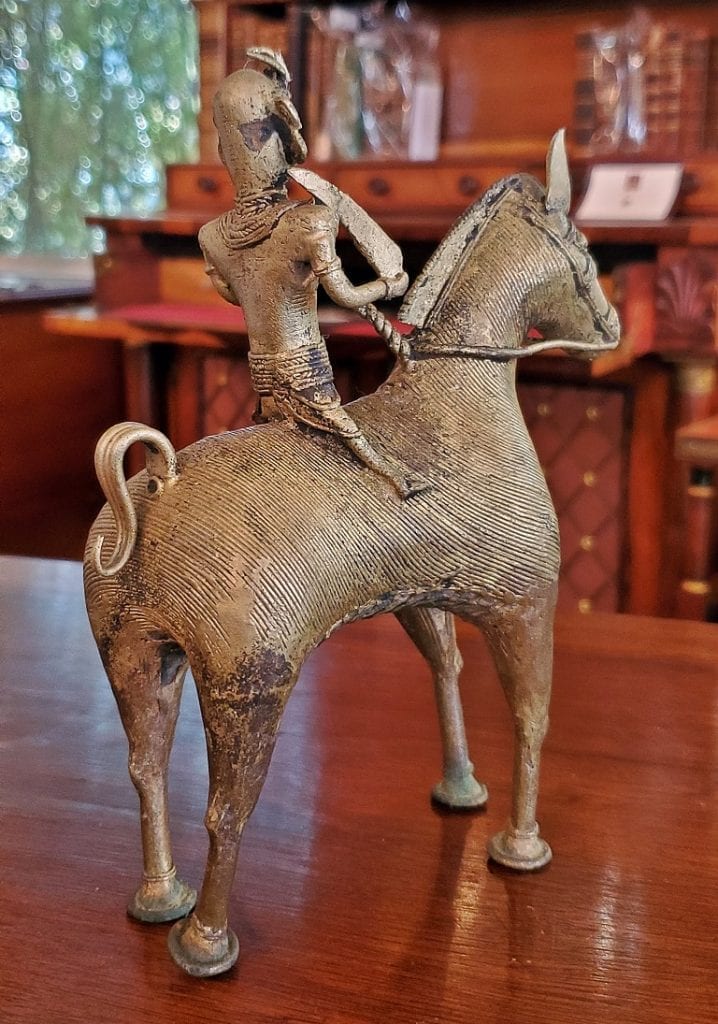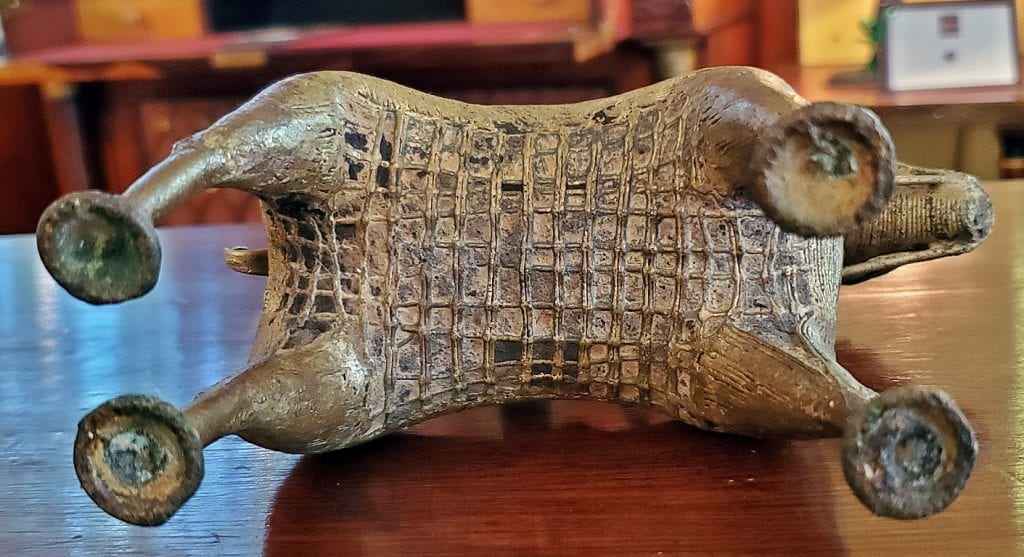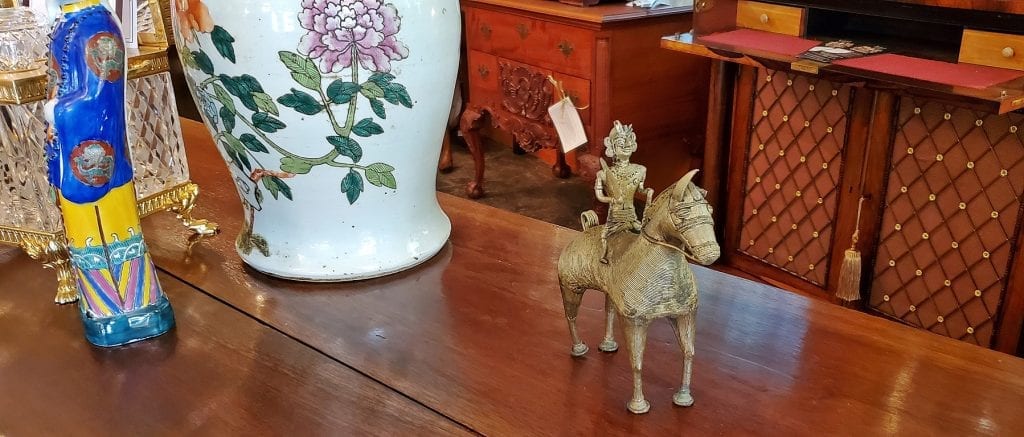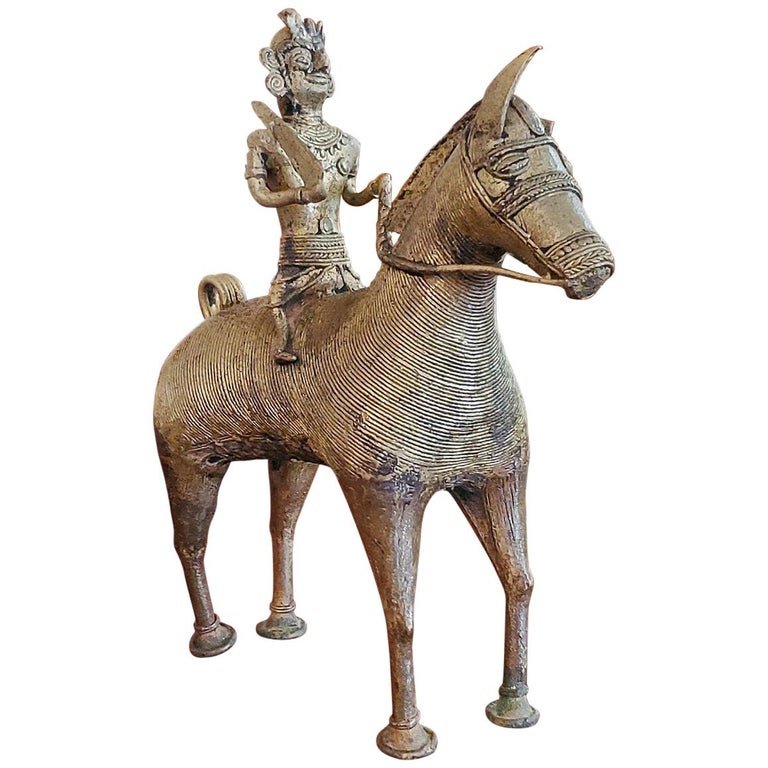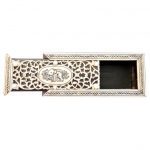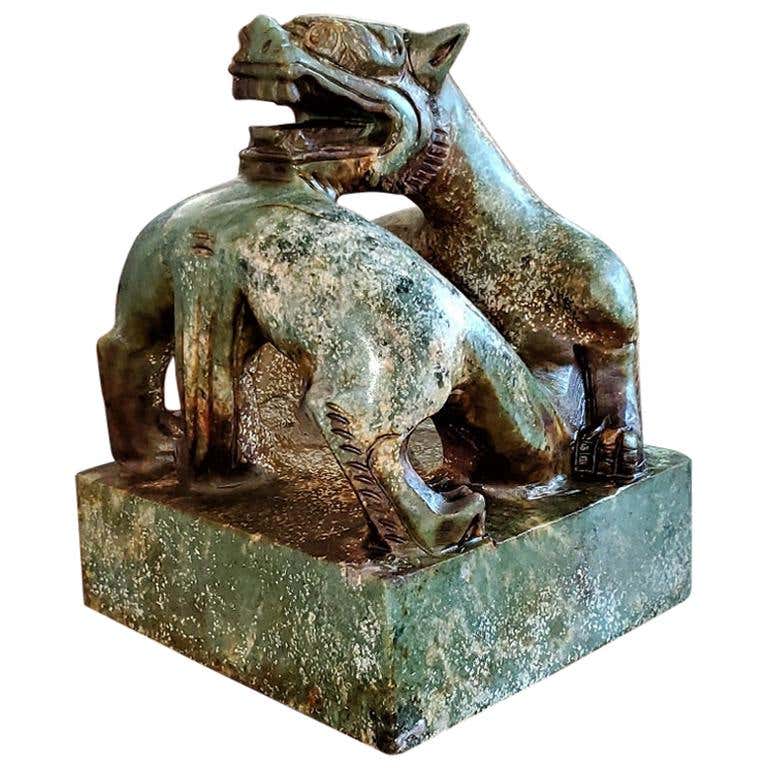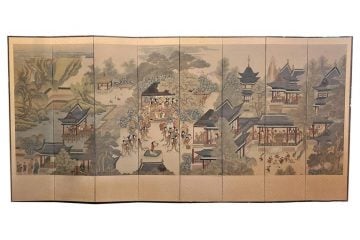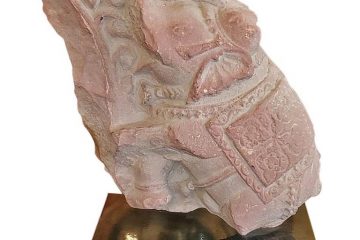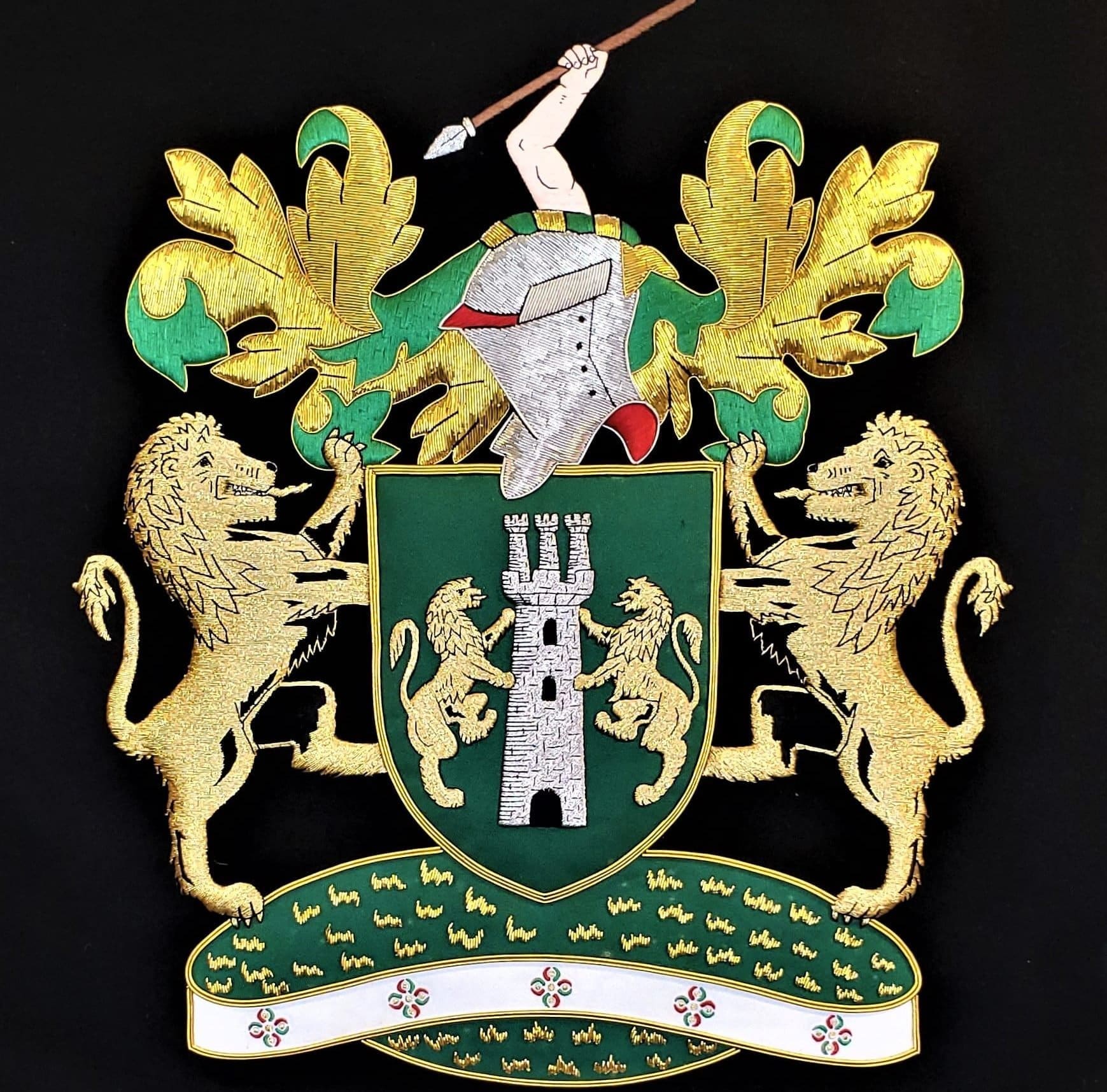Antique Indian Dhokra Horse and Rider Sculpture
PRESENTING a LOVELY Antique Indian Dhokra Horse and Rider Sculpture.
Probably from the late 19th or Early 20th Century as is evidenced by it’s natural patina and clear evidence of age.
It depicts an Indian Warrior with a sword in his right hand mounted on his horse/steed.
The warrior is in classical and ancient Southeast Asian Indian attire and he holds the horse’s reins in his left hand.
The body of the horse is a series of lines (in the classic Dhokra Style) and it has a tribal headdress.
Dhokra (also spelt Dokra) is non–ferrous metal casting using the lost-wax casting technique. This sort of metal casting has been used in India for over 4,000 years and is still used. One of the earliest known lost wax artefacts is the dancing girl of Mohenjo-daro. The product of dhokra artisans are in great demand in domestic and foreign markets because of primitive simplicity, enchanting folk motifs and forceful form. Dhokra horses, elephants, peacocks, owls, religious images, measuring bowls, and lamp caskets etc., are highly appreciated. The lost wax technique for casting of copper based alloys has also been found in China, Egypt, Malaysia, Nigeria, Central America, and other places.
There are two main processes of lost wax casting: solid casting and hollow casting. While the former is predominant in the south of India the latter is more common in Central and Eastern India. Solid casting does not use a clay core but instead a solid piece of wax to create the mould; hollow casting is the more traditional method and uses the clay core.
The first task in the lost wax hollow casting process consists of developing a clay core which is roughly the shape of the final cast image. Next, the clay core is covered by a layer of wax composed of pure beeswax, resin from the tree Damara orientalis, and nut oil. The wax is then shaped and carved in all its finer details of design and decorations. It is then covered with layers of clay, which takes the negative form of the wax on the inside, thus becoming a mould for the metal that will be poured inside it. Drain ducts are left for the wax, which melts away when the clay is cooked. The wax is then replaced by the molten metal, often using brass scrap as basic raw material. The liquid metal poured in hardens between the core and the inner surface of the mould. The metal fills the mould and takes the same shape as the wax. The outer layer of clay is then chipped off and the metal icon is polished and finished as desired. Dhokra Damar tribes are the traditional metalsmiths of West Bengal and Odisha. Their technique of lost wax casting is named after their tribe, hence Dhokra metal casting. The tribe extends from Jharkhand to West Bengal and Orissa; members are distant cousins of the Chhattisgarh Dhokras. A few hundred years ago, the Dhokras of Central and Eastern India traveled south as far as Kerala and north as far as Rajasthan and hence are now found all over India. Dhokra, or Dokra, craft from Dwariapur, West Bengal, is popular. Recently Adilabad Dokra from Telangana got Geographical Indicator tag in 2018.
Link: https://en.wikipedia.org/wiki/Dhokra
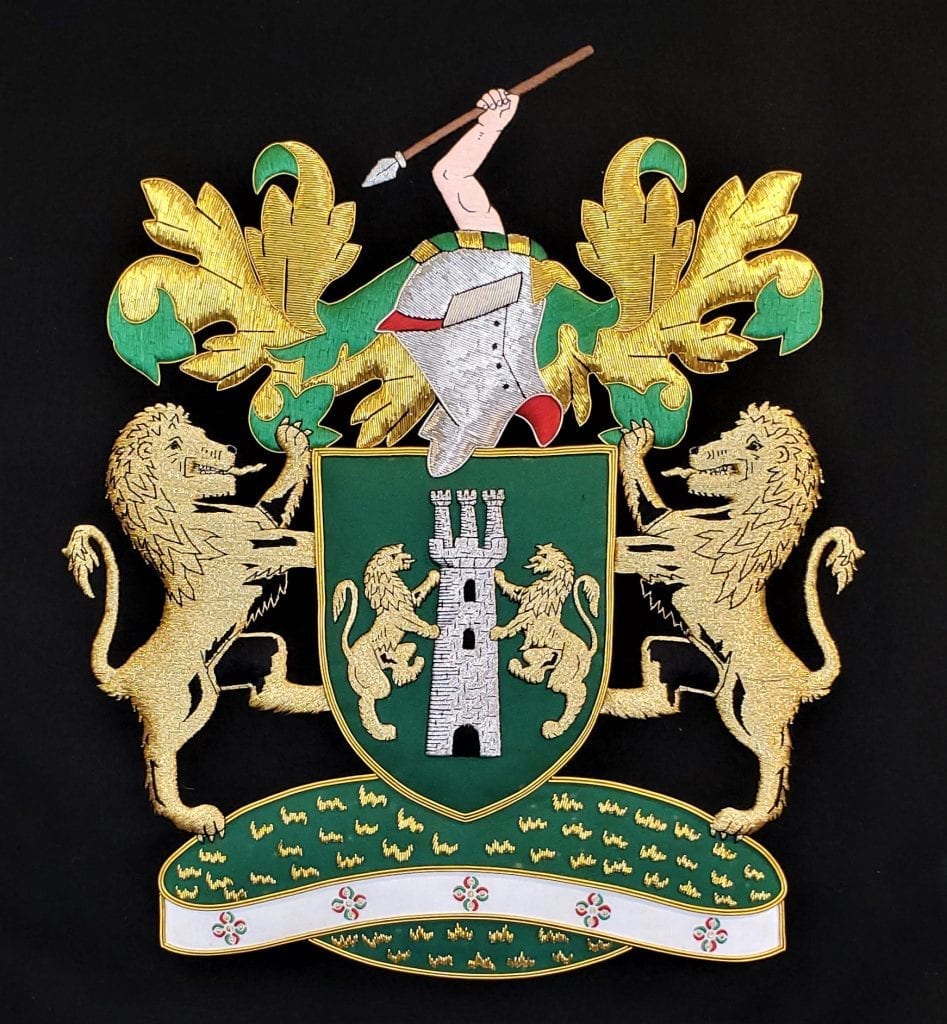

Antique Indian Dhokra Horse and Rider Sculpture.
Provenance: From a Large Private Collection of Southeast Asian Antiquities, collected in the main, at auction in Christie’s & Sotheby’s NY between 1999 and 2008.
Condition: The horse is missing it’s left ear but otherwise very good.
Dimensions: 7.5 in Tall, 6.25 in Wide and 3 in Deep
SALE PRICE NOW: $260
